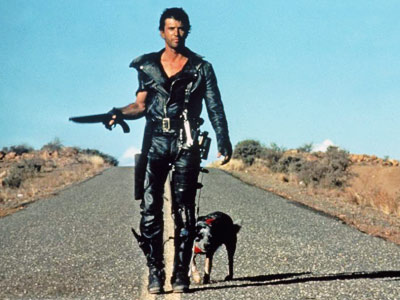
I don’t typically lay out what might be called a “worst-case scenario.” I tend to focus on piecing together what the scientific literature says would happen if we stay anywhere near our current emissions path – Hell and High Water – since, that “business-as-usual” scenario should be motivation enough for action.
Would some 10°F total global warming and 900 to 1000 ppm be the end of human civilization? Possibly, though homo “sapiens” sapiens, while apparently not a very proactive species, is quite resilient.
In any case, a February poll found, “Nearly one-out-of-four voters (23%) say it is at least somewhat likely that global warming will destroy human civilization within the next century” (see “How likely is it that Global Warming will destroy human civilization within the next century?“).
Then we have the apostle of the Apocalypse, James Lovelock (see “Lovelock: Malthus was right, and Climate Progress is way, way too optimistic.”) He’s got a new piece in the UK’s Guardian, which I’ll reprint below. While I don’t think this scenario is how things will play out – I don’t think we face a Mad Max future – I do think it worthwhile to have someone lay out the worst-case scenario every so often other than in the movies:
Climate war could kill nearly all of us, leaving survivors in the Stone Age
In a small way, the plight of the British in 1940 resembles the state of the civilized world now. At that time we had had nearly a decade of the well-intentioned but quite wrong belief that peace was all that mattered.
The followers of the peace lobbies of the 1930s resembled the environmentalist movements now; their intentions were more than good but wholly inappropriate for the war that was about to start. It is time to wake up and realize that Gaia, the Earth system, is no cozy mother that nurtures humans and can be propitiated by gestures such as carbon trading or sustainable development.
Gaia, even though we are a part of her, will always dictate the terms of peace. I am stirred by the thought that Gaia has existed for more than a quarter the age of the universe and that it has taken this long for a species to evolve that can think, communicate, and store its thoughts and experiences.
If we can keep civilization alive through this century perhaps there is a chance that our descendants will one day serve Gaia and assist her in the fine-tuned self-regulation of the climate and composition of our planet.
We have enjoyed 12,000 years of climate peace since the last shift from a glacial age to an interglacial one. Before long, we may face planet-wide devastation worse even than unrestricted nuclear war between superpowers. The climate war could kill nearly all of us and leave the few survivors living a Stone Age existence. But in several places in the world, including the U.K., we have a chance of surviving and even of living well.
For that to be possible, we have to make our lifeboats seaworthy now. Back in May 1940, we in the UK awoke to find facing us across the Channel a wholly hostile continental force about to invade. We were alone without an effective ally but fortunate to have a new leader, Winston Churchill, whose moving words stirred the whole nation from its lethargy: “I have nothing to offer but blood, toil, tears, and sweat.”
We all need modern Churchills to lead us from the clinging, flabby, consensual thinking of the late twentieth century and to bind our nations with a single-minded effort to wage a difficult war.
Previously, as Rolling Stone put it in a profile (see “James Lovelock turns everyone into a climate optimist“):
In Lovelock’s view, the scale of the catastrophe that awaits us will soon become obvious. By 2020, droughts and other extreme weather will be commonplace. By 2040, the Sahara will be moving into Europe, and Berlin will be as hot as Baghdad. Atlanta will end up a kudzu jungle. Phoenix will become uninhabitable, as will parts of Beijing (desert), Miami (rising seas) and London (floods). Food shortages will drive millions of people north, raising political tensions. “The Chinese have nowhere to go but up into Siberia,” Lovelock says. “How will the Russians feel about that? I fear that war between Russia and China is probably inevitable.” With hardship and mass migrations will come epidemics, which are likely to kill millions. By 2100, Lovelock believes, the Earth’s population will be culled from today’s 6.6 billion to as few as 500 million, with most of the survivors living in the far latitudes – Canada, Iceland, Scandinavia, the Arctic Basin.
By the end of the century, according to Lovelock, global warming will cause temperate zones like North America and Europe to heat up by fourteen degrees Fahrenheit, nearly double the likeliest predictions of the latest report from the Intergovernmental Panel on Climate Change, the United Nations-sanctioned body that includes the world’s top scientists. “Our future,” Lovelock writes, “is like that of the passengers on a small pleasure boat sailing quietly above the Niagara Falls, not knowing that the engines are about to fail.”
Comments?


